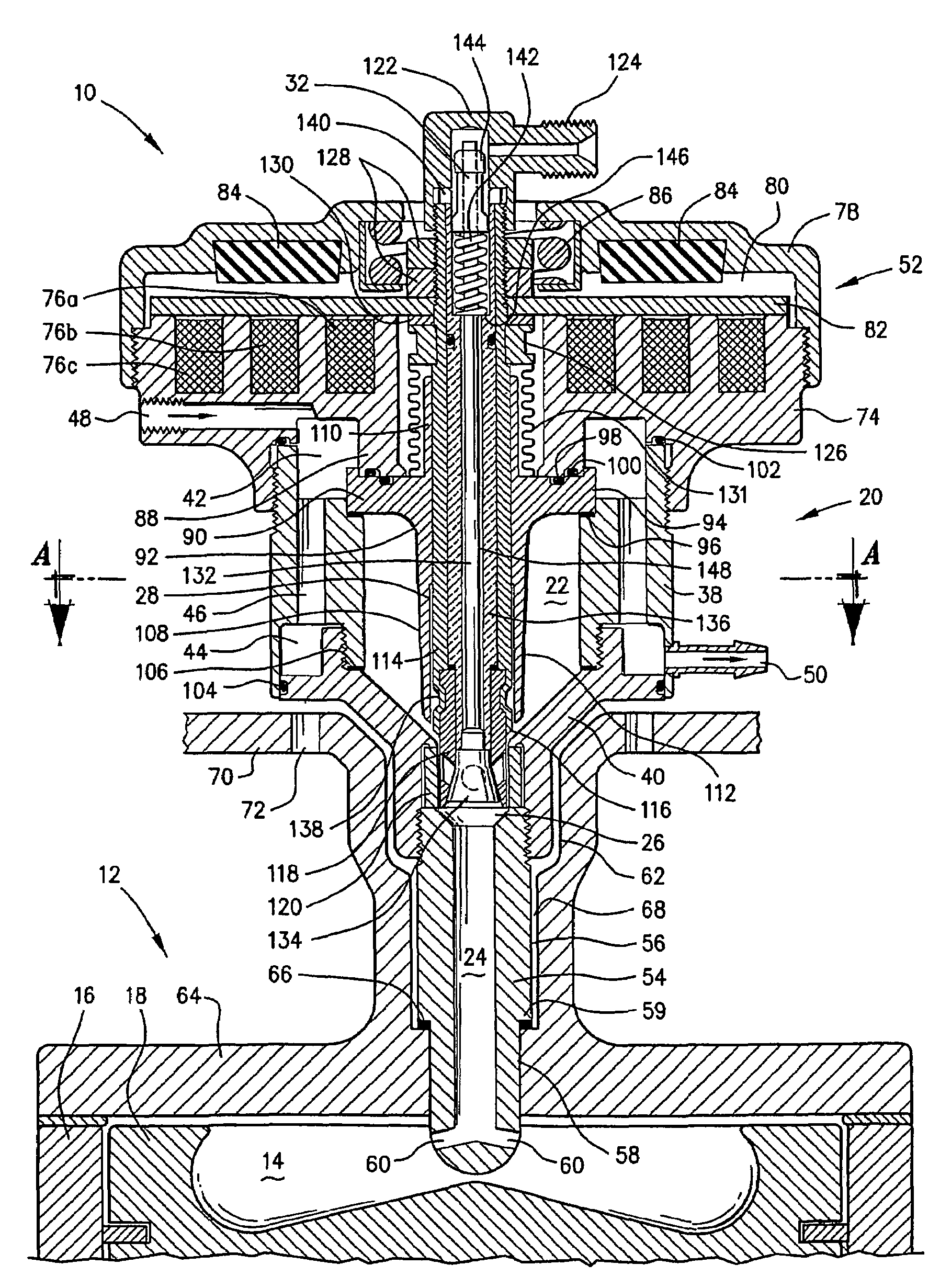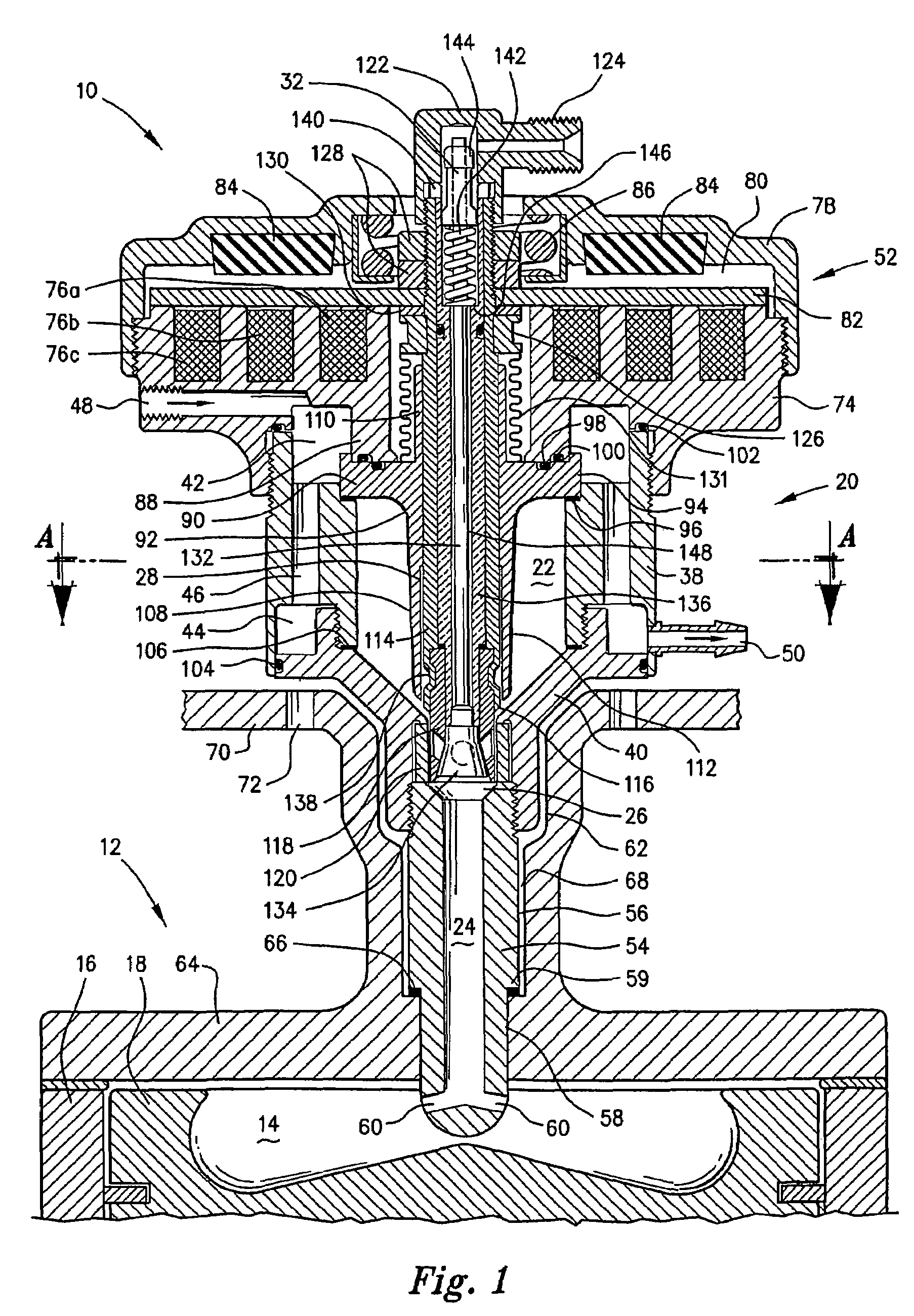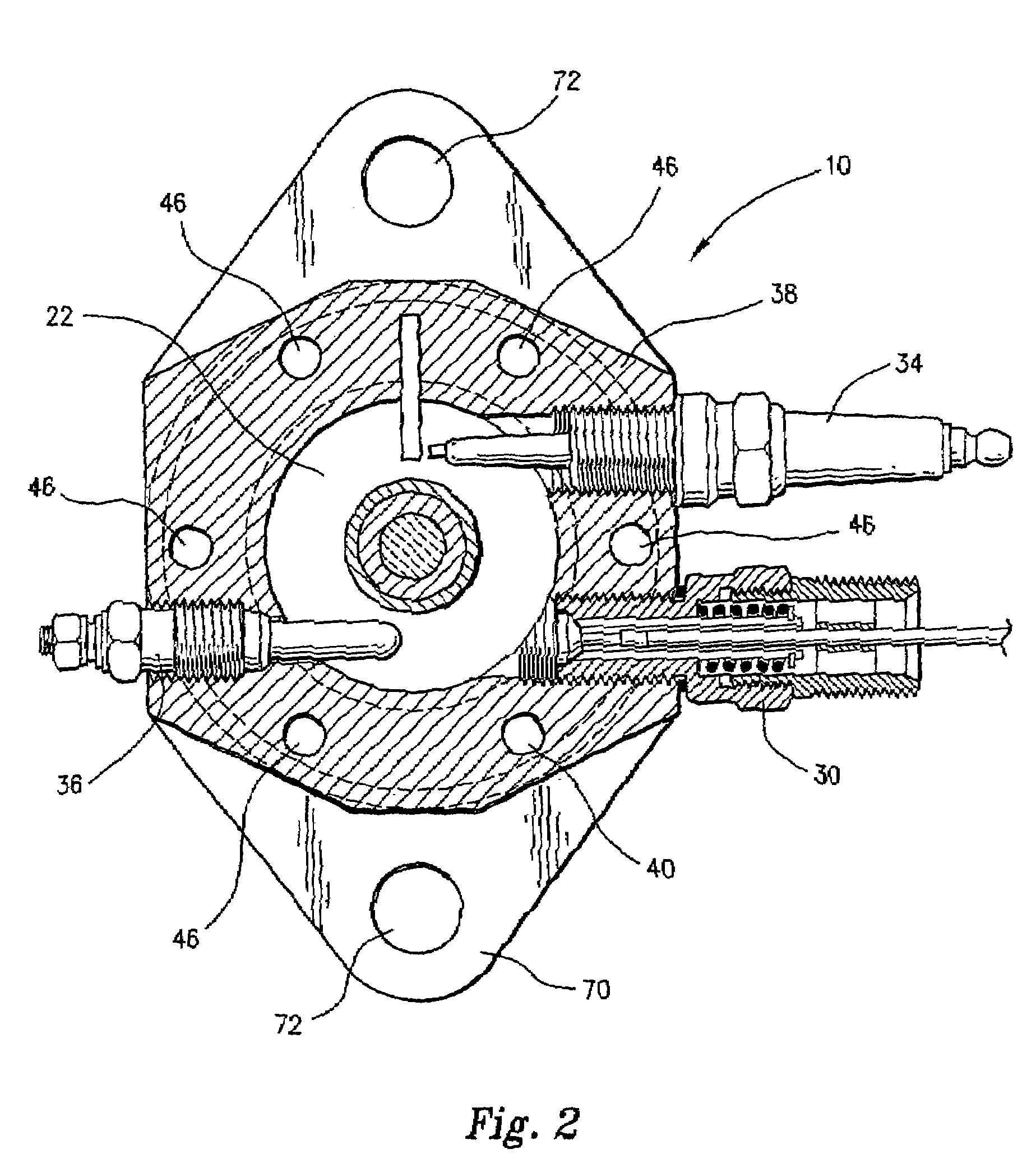Split phase fuel conditioner
a fuel conditioner and split-phase technology, applied in the direction of engine ignition, high-pressure gas fuel injection, electric ignition installation, etc., can solve the problems of physical damage to the diesel engine, ignition delay persists, and all the accumulated fuel present along with that being injected tends to explode in an uncontrolled manner rather than steadily burn
- Summary
- Abstract
- Description
- Claims
- Application Information
AI Technical Summary
Benefits of technology
Problems solved by technology
Method used
Image
Examples
Embodiment Construction
[0046]FIGS. 1 and 2 depict an embodiment of a split phase fuel conditioner 10 for an internal combustion engine 12 having a main combustion chamber 14 defined between an end of a cavity in the form of a cylinder 16 and a piston 18 housed within the cylinder 16. In the present embodiment where the engine 12 is a reciprocating piston engine 12, the engine 12 is likely to include a plurality of combustion chambers defined between respective cylinder ends and pistons. A separate split phase fuel conditioner is provided for each main combustion chamber. For simplicity, the following description is in relation to a single split phase fuel conditioner 10 associated with a single main combustion chamber.
[0047]The split phase fuel conditioner 10 includes a main body 20 defining an ignition chamber 22. A transfer passage 24 having first fluid communication means in the form of a throat 26 at one end for controlled fluid communication with the ignition chamber. The transfer passage 24 is also ...
PUM
 Login to View More
Login to View More Abstract
Description
Claims
Application Information
 Login to View More
Login to View More - R&D
- Intellectual Property
- Life Sciences
- Materials
- Tech Scout
- Unparalleled Data Quality
- Higher Quality Content
- 60% Fewer Hallucinations
Browse by: Latest US Patents, China's latest patents, Technical Efficacy Thesaurus, Application Domain, Technology Topic, Popular Technical Reports.
© 2025 PatSnap. All rights reserved.Legal|Privacy policy|Modern Slavery Act Transparency Statement|Sitemap|About US| Contact US: help@patsnap.com



